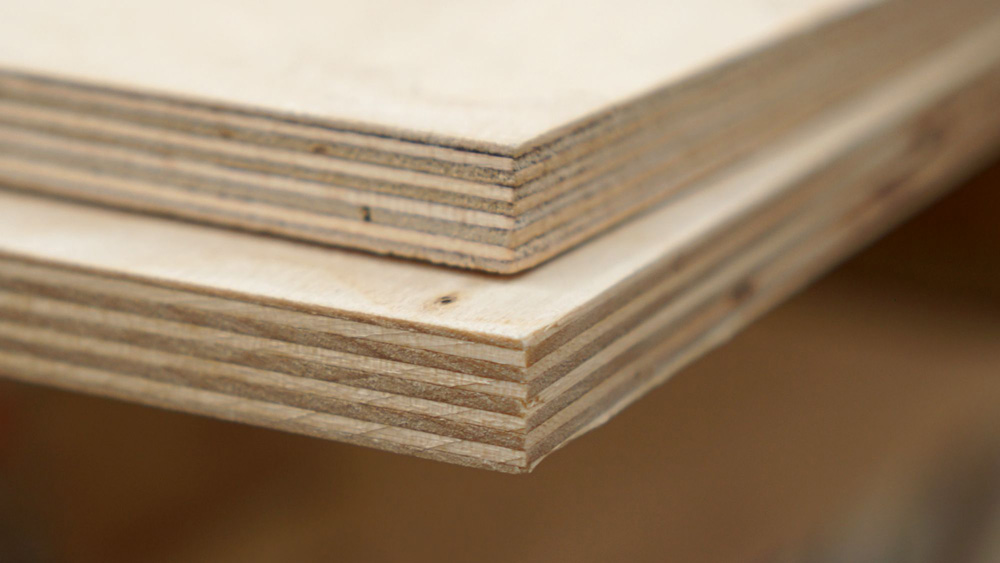MDF vs Plywood: Which one to choose?
Join us to compare two common types of materials in carpentry, MDF and plywood, in terms of features, strength, application and cost.
MDF (medium density fiberboard)
It is made of soft and hard wood chips that are connected with glue and resin. This material is smooth and does not have a wood grain surface and is similar to chipboard, but slightly stronger.
Plywood
It is made of thin layers that are cut from the tree trunk by rotating it around the horizontal axis. After drying and bonding, these layers are pressed under pressure and heat to form a plywood panel. Depending on the quality of the plywood, it may be suitable for interior decorative work.
The difference between plywood and MDF based on strength and durability:
- MDF is not as hard as plywood and can be damaged by impact. It also has less resistance against heavy weight and bends.
- Laminated board is resistant to expansion and contraction due to its layered structure, and its strength is uniform in both directions. Its odd number of layers also prevents swaying.
The difference between plywood and MDF based on functionality:
- Screwing in the edge of the MDF will cause it to split due to its soft core. Also, not using the drill bit will cause the screw head to break or come out.
- Due to its layered structure, plywood is slightly more resistant to splitting at the edges.
- Due to the non-directional structure of MDF, it can be cut, machined and drilled without cracking or filling. Also, the absence of knots makes painting easier.
Their uses:
- MDF is used for doors and interior walls of the building, which is less likely to be damaged by moisture, but it is specially made for furniture.
- Laminated board for doors, exterior stairs, exterior cladding, flooring, moldings, interior railings, interior stairs, interior walls, shear walls, containers and containers, wood joining products and wooden portal frames in construction. It is also used to make curved surfaces such as skateboard ramps due to its ability to bend with wood grain.
Now let’s examine the disadvantages and dangers of the difference between plywood and MDF:
Plywood:
- It is more expensive than MDF.
- It is more difficult to make cuts and smooth edges in it than MDF.
- Although it is more water resistant than MDF, it is still porous and can be damaged by prolonged contact with water.
- Most laminated boards, such as MDF, emit urea formaldehyde, but you can buy a formaldehyde-free version.
M D F:
- When cutting, it produces a lot of dust, which should be done in a well-ventilated environment and using a mask.
- Its pages are heavy.
- It is not water resistant. Using the right primer and paint can help with water resistance, but spills still need to be cleaned up quickly.
- It is not as rigid as plywood and will bend under weight. Its strength is slightly higher than chipboard.
- MDF products emit urea formaldehyde and other volatile organic compounds that are harmful in high concentrations. Covering them with primer and paint can help reduce their emissions.
Ultimately, choosing between MDF and plywood depends on the needs of your project. If you need high strength and water resistance, plywood is a better option. But if price and smooth surface are important to you, MDF can be a good choice.
| Comparison table | M D F | Plywood |
| components | Wood fibers obtained by breaking down hard and soft wood residues are combined using wax and resin and heat press. | Thin sheets of veneer are glued together |
| Structure | Uniform, smooth and without knots. | A number of wooden sheets stuck together are formed. These sheets are connected in layers with very strong adhesives |
| Safety hazards | The use of urea formaldehyde and phenol formaldehyde resins, which are carcinogenic in very high concentrations. | The use of urea formaldehyde and phenol formaldehyde resins, which are carcinogenic in very high concentrations. |
| Usages | Cabinet making, crafts, molding/decoration, shelving (sliding bookshelf) | Roofs, walls, basements, boxes, packages, sports equipment, music equipment, playground equipment, high volume speakers |



